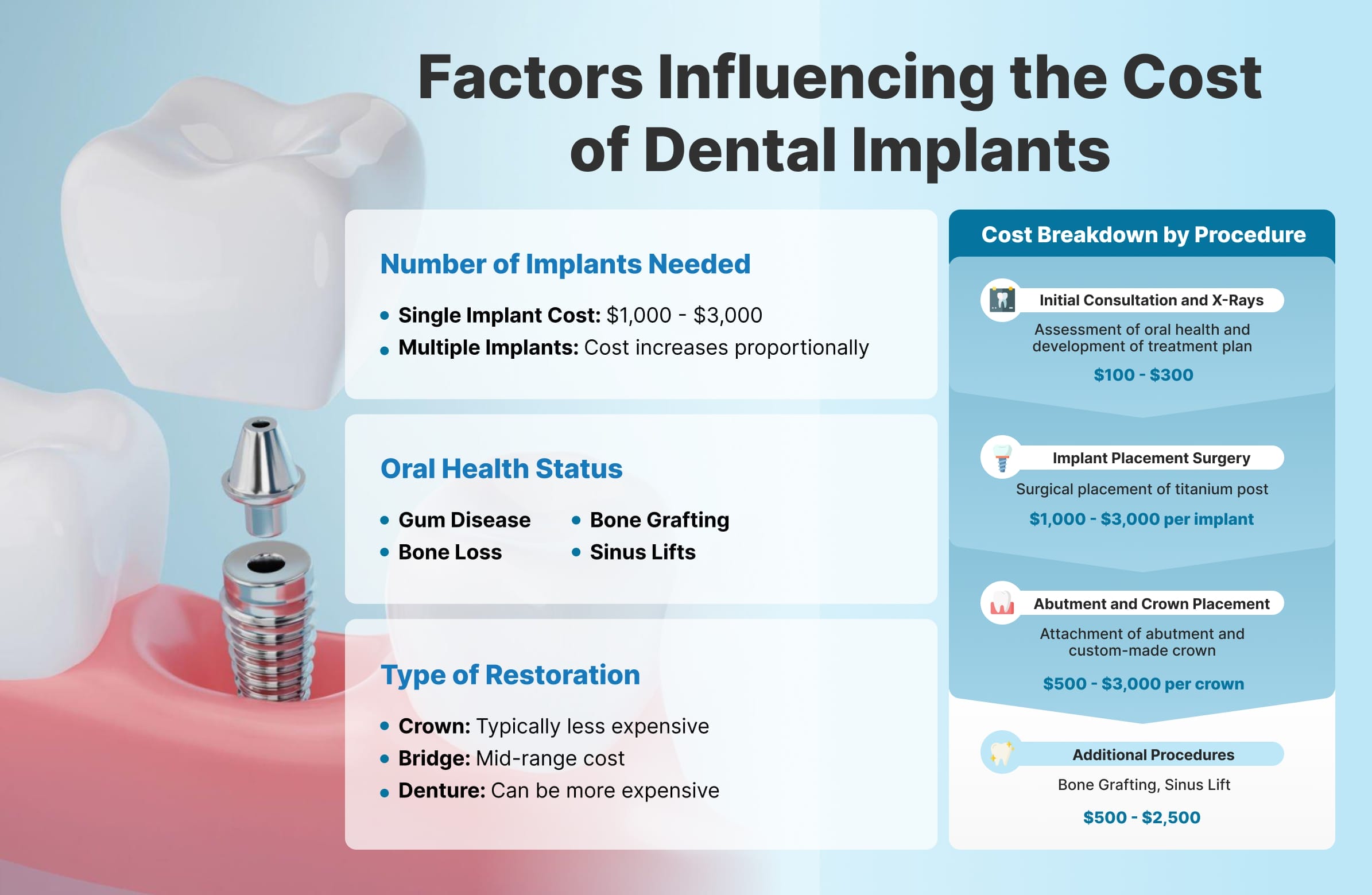An Unbiased View of Dental Sense
An Unbiased View of Dental Sense
Blog Article
7 Easy Facts About Dental Sense Described
Table of ContentsSome Known Factual Statements About Dental Sense The Single Strategy To Use For Dental Sense6 Easy Facts About Dental Sense ExplainedEverything about Dental Sense
are medical gadgets operatively implanted right into the jaw to bring back an individual's capacity to chew or their appearance. They give assistance for fabricated (phony) teeth, such as crowns, bridges, or dentures. When a tooth is lost as a result of injury or disease, a person can experience complications such as rapid bone loss, malfunctioning speech, or adjustments to chewing patterns that cause pain.Dental implant systems include a dental implant body and oral implant joint and may also consist of a joint addiction screw. Cosmetic dentistry services. The dental implant body is operatively put in the jawbone in place of the tooth's origin. The dental implant abutment is typically affixed to the dental implant body by the abutment fixation screw and expands via gums right into the mouth to sustain the attached artificial teeth
(https://dentalsense1.creator-spring.com)Structure of The Dental Implant System choosing dental implants, talk with your dental company about the prospective advantages and risks, and whether you are a prospect for the treatment. Points to consider: Your general health and wellness is a vital consider establishing whether you are a good prospect for oral implants, the length of time it will certainly take to recover, and the length of time the implant might remain in area.
Smoking cigarettes may influence the recovery process and reduce the long-lasting success of the dental implant. The recovery process for the implant body may take several months or longer, throughout which time you normally have a temporary joint in location of the tooth. the oral implant procedure: Meticulously adhere to the oral hygiene guidelines offered to you by your dental provider.
The Buzz on Dental Sense
Implant failure can lead to the need for another surgical treatment to deal with or change the dental implant system. Recovers the ability to eat Brings back aesthetic look Aids keep the jawbone from shrinking as a result of bone loss Preserves the wellness of the bordering bone and gum tissues Assists keep nearby (neighboring) teeth steady Improves high quality of life Damages to surrounding all-natural teeth throughout dental implant positioning Injury to the surrounding tissues during surgical treatment, such as sinus perforation Injury during surgical procedure (as an example, crack of bordering jawbone) Inadequate function, such as feeling like the teeth do not bite with each other normally A feeling that the tooth is loose or twisting in area arising from a joint screw loosening up Implant body failure (looseness of the implant body) because of systemic infection, which might be much more likely in people with uncontrolled diabetes mellitus because of local infection in bone and gums supporting the implant body as a result of postponed healing, which may be more probable in patients who smoke Problem cleansing the gum tissues around the dental implant, leading to inadequate dental health Unattended periodontal disease Post-surgical tingling because of nerve impingement or damages Constantly inform health and wellness care suppliers and imaging professionals that you have oral implants before any kind of magnetic resonance imaging (MRI) or x-ray procedures.
FDA is not aware of any adverse occasions reported for MRI or x-ray treatments with oral implants. Dental implants systems are generally made from materials that follow worldwide agreement criteria of the International Organization for Standardization (ISO) or ASTM International. These requirements have details of what makes a safe material.

An oral implant is a framework that replaces a missing tooth. With screw-like tools, the cosmetic surgeon inserts an implant right into the jawbone, and it serves as a support for a man-made tooth, called a crown. A tool called a joint attaches the fabricated tooth to the dental implant. The crown is personalized to fit the individual's mouth and match the shade of their teeth.
Dental Sense for Dummies
Some individuals are not qualified for oral implant surgery. It is for oral surgeons to operate people with: acute illnessuncontrollable metabolic diseasebone or soft tissue disease or infectionIf these issues are resolved, an individual can have the surgery. In, oral surgeons avoid operating on people with: If people with any of the above undertake oral implant surgical treatment, there is a higher danger of the implant falling short.

Dental implant surgical treatment is a personalized process. Give you time to recover. Affix the post and final crown, bridge or denture.
Next off, your specialist will meticulously position the oral implant right into your jaw. If your dental implant is near the front of your mouth, your dental practitioner will certainly make a short-lived tooth for you to put on up until you heal.
The 9-Minute Rule for Dental Sense
Your service provider can tell you what to anticipate in your scenario. During the recovery stage, your jawbone ought to fuse to the dental implant. This procedure, called osseointegration, is crucial for security and long-term success. This procedure can take anywhere from 3 to 9 months. In some instances, it may take much longer.
As soon as your implant heals, your dental expert can affix the abutment (little connector blog post) and your final restoration (crown, bridge or denture). This generally takes regarding one hour to complete and might require a second minor surgical procedure. You shouldn't feel any pain throughout your oral implant procedure because your copyright will make use of medication to numb your gum tissues.
Report this page